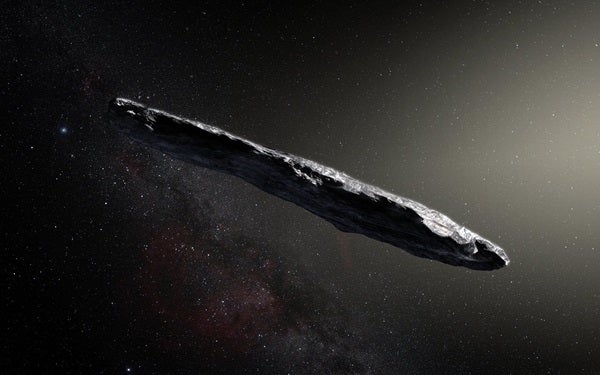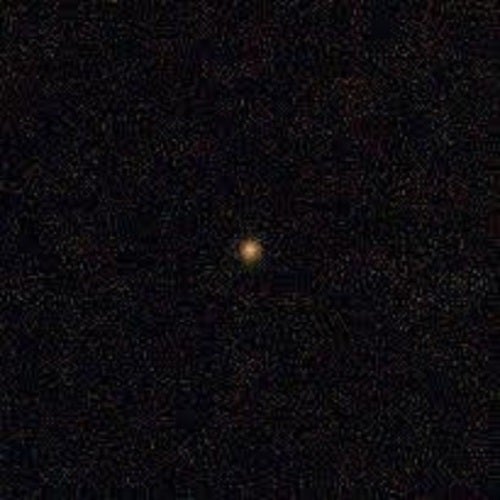1I/2017 U1, which has since been named `Oumuamua, swept past Earth last month. Its bizarre trajectory seemed to indicate that it wasn’t in orbit around the Sun, meaning it came from elsewhere — and it was headed back out to parts unknown.
Observations from the European Southern Observatory’s Very Large Telescope revealed that the asteroid is an oblong, reddish, solid chunk of rock or metal. Initially identified as a comet, it has since given no indication of a tail and has been officially reclassified as an interstellar asteroid. It’s 10 times longer than it is wide, and is nearly a quarter-mile (400 meters) long. It came from the same region of the sky now occupied by Vega, but that star was in a different position 300,000 years ago when this asteroid would have passed through the region.
In fact, we may never know quite where it came from.
The WIYN Telescope at Kitt Peak imaged 1I/2017 U1 tracking across the sky; the asteroid appears about 10 million times fainter than the very faintest star visible with the naked eye.
R. Kotulla (University of Wisconsin) & WIYN/NOAO/AURA/NSF
Corey S. Powell, an editor at OMNI and Aeon, compared that shape to Rama from Arthur C. Clarke’s Rendevouz with Rama, while Eric Betz of our sister publication Discover magazine likened it to the alien probe from Star Trek IV: oblong and rocky. (`Oumuamua probably wasn’t an alien probe, though, and it definitely wasn’t looking for whales.)
New illustrations of interstellar asteroid Oumuamua are not going to do anything to dissuade those who think it should have been named ‘Rama’ instead. https://t.co/6fexQcMGHk pic.twitter.com/vekr57Y88K
— Corey S. Powell (@coreyspowell) November 20, 2017
Astronomers spotted a cigar-shaped object from another solar system? I know where this is going. Someone rally Spock to speak to the humpback whales. https://t.co/3zrxpZxSrF pic.twitter.com/fBNDM8f9YY
— Eric Betz (@ericbetz) November 16, 2017
The oddball interstellar asteroid is the first of its kind discovered. Asteroids are relatively small, dark objects that require careful observation and sensitive instrument to detect, especially if they’re moving as fast as `Oumuamua. But surveys like Pan-STARRS, which spotted the interloper, may be able to detect other objects like it and help us study more rocks that are just passing through.











